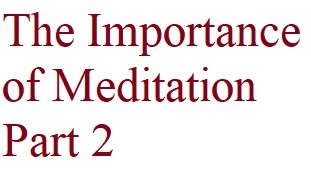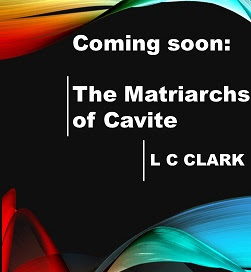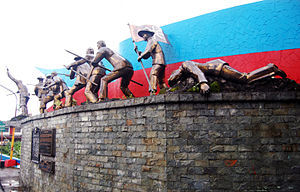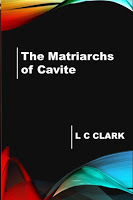L.C. Clark's Blog, page 4
June 19, 2018
The Dept. of Motor Vehicles (DMV) Process Experience
 I have been on dialysis for eight years before I accepted that I have a disability. I drive myself to and from dialysis, to and from preaching routinely and to errands. Parking condition in San Francisco is bad enough for non-disabled. Imagine what it’s like for the disabled. Friends have asked me numerous times why I don’t have a disabled parking placard. Yet, I considered applying for a disabled parking only recently.
I have been on dialysis for eight years before I accepted that I have a disability. I drive myself to and from dialysis, to and from preaching routinely and to errands. Parking condition in San Francisco is bad enough for non-disabled. Imagine what it’s like for the disabled. Friends have asked me numerous times why I don’t have a disabled parking placard. Yet, I considered applying for a disabled parking only recently. I got an application form from DMV and asked my nephrologist to sign it, and he included his doctor’s license number. I submitted the form to DMV on a Wednesday after the preaching work. I was dressed in what most people recognize as “Jehovah’s Witness attire”. The Latina lady at the DMV counter took one look at me and decided that I’m not disabled, like I’m making it up because I wasn’t walking with a cane, no wheelchair, no shabby sick look.
“Your doctor’s penmanship is unreadable. Here’s a blank form. He needs to do it over again,” she said as she handed me the old and blank forms.
My nephrologist did the form over with better writing, signed it and again included his doctor’s license number. The DMV lady said it’s still not good enough, a check box was left unchecked. I had to drive back to my doctor, suffer the terrible parking situation at DMV all over again then went back to DMV. The Latina at the counter called in another Latina who seemed to be her supervisor.
“Oh, you're sixty six years old.” she said, like she didn't believe it. Most Asians don't look their age. Then she turned the form over. “Oh, the doctor put his license number. Go back to him he needs to check this,” she said marking a paragraph with a highlighter.
On the fourth try, I have just about had it. Still, I went back to DMV to resubmit my application form for a temporary disabled placard. This time it was on a Friday and the line to the “Appointments and People with Disability” counter was a quarter of a mile long.
After I had stood in place for two hours, another Latina employee asked the line who has an appointment and who were the disabled. She then rearranged the line to put those with appointments who came late up front and threw all the disabled to the back of the line. I had stood on this line before, as this was the fourth time I was resubmitting. This was the first time the disabled were thrown to the back of the line. My anger at the injustice started to rise.
Finally after two additional hours of standing, making it a total of four hours, I reached the counter. I was given a number to watch out for at the monitor hanging from the ceiling. I sat down in front of the monitor and stared at it for another thirty minutes.
Just when my number was almost up, the numbers went ten numbers back away from mine. I jumped up to ask the lady at the counter why the numbers have gone back. She said someone made a mistake and I should just wait for my number again. My anger is now a notch higher. An African-American old woman seated next to me must have been observing the entire thing.
“I am gonna leave you now. Don’t do anything that will make them take you away in handcuffs. It’s not worth it.” She whispered to me then stood up to go.
I was stunned! I didn’t realize smoke was coming out of my ears!
See also:
A Scary Filipina
Api (Oppressed) Syndrome
Bullying a Dialysis Patient
Published on June 19, 2018 09:42
The Department of Motor Vehicles (DMV) Process Experience
 I have been on dialysis for eight years before I accepted that I have a disability. I drive myself to and from dialysis, to and from preaching routinely and to errands. Parking condition in San Francisco is bad enough for non-disabled. Imagine what it’s like for the disabled. Friends have asked me numerous times why I don’t have a disabled parking placard. Yet, I considered applying for a disabled parking only recently.
I have been on dialysis for eight years before I accepted that I have a disability. I drive myself to and from dialysis, to and from preaching routinely and to errands. Parking condition in San Francisco is bad enough for non-disabled. Imagine what it’s like for the disabled. Friends have asked me numerous times why I don’t have a disabled parking placard. Yet, I considered applying for a disabled parking only recently. I got an application form from DMV and asked my nephrologist to sign it, and he included his doctor’s license number. I submitted the form to DMV on a Wednesday after the preaching work. I was dressed in what most people recognize as “Jehovah’s Witness attire”. The Latina lady at the DMV counter took one look at me and decided that I’m not disabled, like I’m making it up because I wasn’t walking with a cane, no wheelchair, no shabby sick look.
“Your doctor’s penmanship is unreadable. Here’s a blank form. He needs to do it over again,” she said as she handed me the old and blank forms.
My nephrologist did the form over with better writing, signed it and again included his doctor’s license number. The DMV lady said it’s still not good enough, a check box was left unchecked. I had to drive back to my doctor, suffer the terrible parking situation at DMV all over again then went back to DMV. The Latina at the counter called in another Latina who seemed to be her supervisor.
“Oh, you're sixty six years old.” she said, like she didn't believe it. Most Asians don't look their age. Then she turned the form over. “Oh, the doctor put his license number. Go back to him he needs to check this,” she said marking a paragraph with a highlighter.
On the fourth try, I have just about had it. Still, I went back to DMV to resubmit my application form for a temporary disabled placard. This time it was on a Friday and the line to the “Appointments and People with Disability” counter was a quarter of a mile long.
After I had stood in place for two hours, another Latina employee asked the line who has an appointment and who were the disabled. She then rearranged the line to put the one with appointments who came late up front and threw all the disabled to the back of the line. I had stood on this line before, as this was the fourth time I was resubmitting. This was the first time the disabled were thrown to the back of the line. My anger at the injustice started to rise.
Finally after two additional hours of standing, making it a total of four hours, I reached the counter. I was given a number to watch out for at the monitor hanging from the ceiling. I sat down in front of the monitor and stared at it for another thirty minutes.
Just when my number was almost up, the numbers went ten numbers back away from mine. I jumped up to ask the lady at the counter why the numbers have gone back. She said someone made a mistake and I should just wait for my number again. My anger is now a notch higher. An African-American old woman seated next to me must have been observing the entire thing.
“I am gonna leave you now. Don’t do anything that will make them take you away in handcuffs. It’s not worth it.” She whispered to me then stood up to go.
I was stunned! I didn’t realize smoke was coming out of my ears!
See also:
A Scary Filipina
Api (Oppressed) Syndrome
Bullying a Dialysis Patient
Published on June 19, 2018 09:42
June 10, 2018
It’s not the tragedies we suffered, not the ...
 It’s not the tragedies we suffered, not the movies we loved, not the association of different communities that made us who or what we are today. It’s the books we read that shaped our minds, honed our hearts and charted our future.
It’s not the tragedies we suffered, not the movies we loved, not the association of different communities that made us who or what we are today. It’s the books we read that shaped our minds, honed our hearts and charted our future. In the late 60’s I read the following:
The Revolt of the Masses: The Story of Bonifacio and the Katipunanby Teodoro Agoncillo
Struggle for National Democracy by Jose Maria Sison
1. Quotations, 2.On Contradiction and3. Selected Military Writings All by Mao Tse-Tung
How the books changed me:
I learned how Bonifacio’s revolution was thwarted. I joined a nationalist student organization
I saw firsthand the poverty of the masses by going to the slums and poor urban communities and countryside peasantry.
I ran away from home and quit college to be a full time underground political activist. I married a comrade.
In the 70’s I read the following:
The Cinderella Complex: Women’s Hidden Fear of Independenceby Colette Dowling
The Assertive Woman by Nancy Austin and Stanlee Phelps
The New Executive Woman by Marcille Williams
How the books changed me:
I left my first husband because he refused to take me with him to the countryside like he used to. He said it was for my safety. I remarried.
When my second husband saw what I was reading, he commented, “Really?! You need assertiveness?!” He was being sarcastic.
I joined and committed to the unorganized, disunited, exploited working class I fought to uplift.
In the 80’s I studied the Bible with Jehovah’s Witnesses. If the order of the books were reversed, if I studied the Bible in the 60s, I would not have left my first husband.
“A wife is bound as long as her husband is alive. But if her husband should fall asleep in death, she is free to be married to whomever she wants, only in the Lord. But in my opinion, she is happier if she remains as she is; and I certainly think I also have God’s spirit.” (1 Corinthians 7:39-40)
Paul says he’s got God’s spirit in saying so. Jehovah’s spirit can’t be wrong. I was never again as happy as I was with my first husband.
See also:Kabataang Makabayan (KM), In Hindsight The Song Perfect Matches REBEL Paperback Writer - Book 2
Published on June 10, 2018 22:00
The Books We Read
It’s not the tragedies we suffered, not the movies we loved, not the association of different communities that made us who or what we are today. It’s the books we read that shaped our minds, honed our hearts and charted our future.
In the late 60’s I read the following:
The Revolt of the Masses: The Story of Bonifacio and the Katipunanby Teodoro Agoncillo
Struggle for National Democracy by Jose Maria Sison
Quotations, On Contradiction andSelected Military Writings by Mao Tse-Tung
How the books changed me:
I learned how Bonifacio’s revolution was thwarted. I joined a nationalist student organization
I saw firsthand the poverty of the masses by going to the slums and poor urban communities and countryside peasantry.
I ran away from home and quit college to be a full time underground political activist. I married a comrade.
In the 70’s I read the following:
The Cinderella Complex: Women’s Hidden Fear of Independenceby Colette Dowling
The Assertive Woman by Nancy Austin and Stanlee Phelps
The New Executive Woman by Marcille Williams
How the books changed me:
I left my first husband because he refused to take me with him to the countryside like he used to. He said it was for my safety. I remarried.
When my second husband saw what I was reading, he commented, “Really?! You need assertiveness?!” He was being sarcastic.
I joined and committed to the unorganized, disunited, exploited working class I fought to uplift.
In the 80’s I studied the Bible with Jehovah’s Witnesses. If the order of the books were reversed, if I had the studied the Bible first, I would not have left my first husband.
“A wife is bound as long as her husband is alive. But if her husband should fall asleep in death, she is free to be married to whomever she wants, only in the Lord. But in my opinion, she is happier if she remains as she is; and I certainly think I also have God’s spirit.” (1 Corinthians 7:39-40)
Paul says he’s got God’s spirit in saying so. Jehovah’s spirit can’t be wrong. I was never again as happy as I was with my first husband.
See also:Kabataang Makabayan (KM), In Hindsight The Song Perfect Matches REBEL Paperback Writer - Book 2
In the late 60’s I read the following:
The Revolt of the Masses: The Story of Bonifacio and the Katipunanby Teodoro Agoncillo
Struggle for National Democracy by Jose Maria Sison
Quotations, On Contradiction andSelected Military Writings by Mao Tse-Tung
How the books changed me:
I learned how Bonifacio’s revolution was thwarted. I joined a nationalist student organization
I saw firsthand the poverty of the masses by going to the slums and poor urban communities and countryside peasantry.
I ran away from home and quit college to be a full time underground political activist. I married a comrade.
In the 70’s I read the following:
The Cinderella Complex: Women’s Hidden Fear of Independenceby Colette Dowling
The Assertive Woman by Nancy Austin and Stanlee Phelps
The New Executive Woman by Marcille Williams
How the books changed me:
I left my first husband because he refused to take me with him to the countryside like he used to. He said it was for my safety. I remarried.
When my second husband saw what I was reading, he commented, “Really?! You need assertiveness?!” He was being sarcastic.
I joined and committed to the unorganized, disunited, exploited working class I fought to uplift.
In the 80’s I studied the Bible with Jehovah’s Witnesses. If the order of the books were reversed, if I had the studied the Bible first, I would not have left my first husband.
“A wife is bound as long as her husband is alive. But if her husband should fall asleep in death, she is free to be married to whomever she wants, only in the Lord. But in my opinion, she is happier if she remains as she is; and I certainly think I also have God’s spirit.” (1 Corinthians 7:39-40)
Paul says he’s got God’s spirit in saying so. Jehovah’s spirit can’t be wrong. I was never again as happy as I was with my first husband.
See also:Kabataang Makabayan (KM), In Hindsight The Song Perfect Matches REBEL Paperback Writer - Book 2
Published on June 10, 2018 22:00
June 1, 2018
The Importance of Meditation Part 2
 From: www.JW.org
From: www.JW.org

This part of Moses’ story was never included in any of the movies made about him. Let’s focus on the verses and their initial impression, then what meditation brings to the table.
Verse Initial Impression Meditation Brings
Deuteronomy 34:4-7 says, “Jehovah then said to him: “This is the land about which I have sworn to Abraham, Isaac, and Jacob, saying, ‘To your offspring I will give it.’ I have let you see it with your own eyes, but you will not cross over there.” After that Moses the servant of Jehovah died there in the land of Moʹab just as Jehovah had said. He buried him in the valley in the land of Moʹab, opposite Beth-peʹor, and nobody knows where his grave is down to this day.” Jehovah showed Moses the view of the promised land he missed. Was that being cruel or kind? Moses was assured that his offspring will get the land but not him. It sounded like Jehovah was punishing him without end.
His grave is unknown because if the Israelite knew, they might make him a monument and worship him for all the miracles they saw him perform? It was kind of Jehovah to show Moses a view of the promised land with the assurance that his offspring will inherit it. Any loving parent would appreciate knowing his children will be in a good place, even if he himself won’t be there. The view that he got to see also rewarded his efforts in taking the Jews out of Egypt. It showed him a happy ending to his life story just before he died.
In Proverbs 3:11-12, it says “My son, do not reject the discipline of Jehovah, And do not loathe his reproof, For those whom Jehovah loves he reproves, Just as a father does a son in whom he delights.” Did Moses lose Jehovah’s love when he died without ever getting into the promised land he led the Israelites to enjoy?
Jehovah disciplines with love.
What’s the proof that Jehovah continued to love Moses after he was disciplined? Centuries later, Matthew 17:1-3, says, “… Jesus took Peter and James and his brother John along and … he was transfigured before them… And look! There appeared to them Moses and E·liʹjah conversing with him.” In verse 5 Jehovah himself spoke. The presence of Moses in this “meeting” shows that Moses remained in the level of Isaiah who was never disciplined. He was shown conversing with Jesus like they’ve all known each other despite having lived centuries apart. What a show of Jehovah’s continuing love for Moses indeed!
See also:
The Importance of Meditation
Alternative Facts
Google It
Published on June 01, 2018 23:27
From: www.JW.org This part...
 From: www.JW.org
From: www.JW.org

This part of Moses’ story was never included in any of the movies made about him. Let’s focus on the verses and their initial impression, then what meditation brings to the table.
Verse Initial Impression Meditation Brings
Deuteronomy 34:4-7 says, “Jehovah then said to him: “This is the land about which I have sworn to Abraham, Isaac, and Jacob, saying, ‘To your offspring I will give it.’ I have let you see it with your own eyes, but you will not cross over there.” After that Moses the servant of Jehovah died there in the land of Moʹab just as Jehovah had said. He buried him in the valley in the land of Moʹab, opposite Beth-peʹor, and nobody knows where his grave is down to this day.” Jehovah showed Moses the view of the promised land he missed. Was that being cruel or kind? Moses was assured that his offspring will get the land but not him. It sounded like Jehovah was punishing him without end.
His grave is unknown because if the Israelite knew, they might make him a monument and worship him for all the miracles they saw him perform? It was kind of Jehovah to show Moses a view of the promised land with the assurance that his offspring will inherit it. Any loving parent would appreciate knowing his children will be in a good place, even if he himself won’t be there. The view that he got to see also rewarded his efforts in taking the Jews out of Egypt. It showed him a happy ending to his life story just before he died.
In Proverbs 3:11-12, it says “My son, do not reject the discipline of Jehovah, And do not loathe his reproof, For those whom Jehovah loves he reproves, Just as a father does a son in whom he delights.” Did Moses lose Jehovah’s love when he died without ever getting into the promised land he led the Israelites to enjoy?
Jehovah disciplines with love.
What’s the proof that Jehovah continued to love Moses after he was disciplined? Centuries later, Matthew 17:1-3, says, “… Jesus took Peter and James and his brother John along and … he was transfigured before them… And look! There appeared to them Moses and E·liʹjah conversing with him.” In verse 5 Jehovah himself spoke. The presence of Moses in this “meeting” shows that Moses remained in the level of Isaiah who was never disciplined. He was shown conversing with Jesus like they’ve all known each other despite having lived centuries apart. What a show of Jehovah’s continuing love for Moses indeed!
See also:
The Importance of Meditation
Alternative Facts
Google It
Published on June 01, 2018 23:27
The Importance of Meditation, Part 2
 From: www.JW.org This part of Moses’ story was never included in any of the movies made about him. Let’s focus on the verses and their initial impression, then what meditation brings to the table.
From: www.JW.org This part of Moses’ story was never included in any of the movies made about him. Let’s focus on the verses and their initial impression, then what meditation brings to the table. Verse Initial Impression Meditation Brings
Deuteronomy 34:4-7 says, “Jehovah then said to him: “This is the land about which I have sworn to Abraham, Isaac, and Jacob, saying, ‘To your offspring I will give it.’ I have let you see it with your own eyes, but you will not cross over there.” After that Moses the servant of Jehovah died there in the land of Moʹab just as Jehovah had said. He buried him in the valley in the land of Moʹab, opposite Beth-peʹor, and nobody knows where his grave is down to this day.” Jehovah showed Moses the view of the promised land he missed. Was that being cruel or kind? Moses was assured that his offspring will get the land but not him. It sounded like Jehovah was punishing him without end.
His grave is unknown because if the Israelite knew, they might make him a monument and worship him for all the miracles they saw him perform? It was kind of Jehovah to show Moses a view of the promised land with the assurance that his offspring will inherit it. Any loving parent would appreciate knowing his children will be in a good place, even if he himself won’t be there. The view that he got to see also rewarded his efforts in taking the Jews out of Egypt. It showed him a happy ending to his life story just before he died.
In Proverbs 3:11-12, it says “My son, do not reject the discipline of Jehovah, And do not loathe his reproof, For those whom Jehovah loves he reproves, Just as a father does a son in whom he delights.” Did Moses lose Jehovah’s love when he died without ever getting into the promised land he led the Israelites to enjoy?
Jehovah disciplines with love.
What’s the proof that Jehovah continued to love Moses after he was disciplined? Centuries later, Matthew 17:1-3, says, “… Jesus took Peter and James and his brother John along and … he was transfigured before them… And look! There appeared to them Moses and E·liʹjah conversing with him.” In verse 5 Jehovah himself spoke. The presence of Moses in this “meeting” shows that Moses remained in the level of Isaiah who was never disciplined. He was shown conversing with Jesus like they’ve all known each other despite having lived centuries apart. What a show of Jehovah’s continuing love for Moses indeed!
See also:
The Importance of Meditation
Alternative Facts
Google It
Published on June 01, 2018 23:27
May 24, 2018
Women across the globe differ according...
 Women across the globe differ according to culture. Culture is mostly developed out of historical interaction between nations. Asian women are known to be culturally meek and subservient except for Filipinas.
Women across the globe differ according to culture. Culture is mostly developed out of historical interaction between nations. Asian women are known to be culturally meek and subservient except for Filipinas.In the revolution against Spain, women were a moving force. In 1893, the Supreme Council of The Katipunan, an underground revolutionary government, organized a women's auxiliary section. In the same year, the provincial council of Cavite was organized. It was the most successful council of the Katipunan.
There were sporadic pocket rebellions throughout the three centuries of colonialism. A large organized group with a meager arsenal to dare confront the well-armed Spanish army was at first inconceivable.
 Battle of Imus Monument
Battle of Imus MonumentFrom: wikimedia.org/wikipedia The first big battle of the Philippine revolution was the Battle of Imus, or the Siege of Imus in September, 1896. It caught the Spanish colonial government by surprise. The victory gained by the Filipino revolutionaries in this siege showed potential to win. Two months later, in November 1896, the Spanish military retaliated against the revolutionaries in Cavite province with the Battle of Binakayan - Dalahican.
Those three clashes made the revolution official. After centuries of procrastination, the first to draw blood from the enemy were the people of Cavite. That placed the Caviteños’ courage and bravery in history. Not all of those revolutionaries were men. A good number of them were Caviteñas, the women of Cavite.
The Philippine Revolution was winning when the Treaty of Paris was signed in 1898. The treaty ended the Spanish–American War. As a condition of the treaty, the United States paid Spain $20 Million for the rights to occupy and govern the Philippines. Except for the priests who remained under a separation of church and state clause, the Spaniards absconded to salvage their hold on other colonies around the globe.
Filipinas came out of the colonial years under Spain stronger than their men. By the time peace and a relative independence was reached in 1899, it was too late to break the Filipina spirit back into domestication. She has learned to fight for her country, take sole responsibility for her family and make money. All while retaining the balance between feminine charm and subtle assertiveness that took the Women’s Liberation Movement, a century later, to teach the women of other nations.
The Caviteñas, in comparison with Filipinas from other regions, earned a reputation for feistiness, vindictiveness, if warranted and only if warranted, down right malevolence. They would be least likely to become victims of rape, domestic abuse, assault or home invasion. They are shrewd business managers, assertive in any situation and adapts to the most difficult condition without losing charm and poise. Thus, they make perfect matriarchs.
The book, The Matriarchs of Cavite is now in editing stage and will be launched soon.
See also:The First Matriarch
The Book, The Email Ordered Wife
Kabataang Makabayan (KM), In Hindsight
Published on May 24, 2018 10:34
Coming Soon: The Matriarchs of Cavite
 Women across the globe differ according to culture. Culture is mostly developed out of historical interaction between nations. Asian women are known to be culturally meek and subservient except for Filipinas.
Women across the globe differ according to culture. Culture is mostly developed out of historical interaction between nations. Asian women are known to be culturally meek and subservient except for Filipinas.In the revolution against Spain, women were a moving force. In 1893, the Supreme Council of The Katipunan, an underground revolutionary government, organized a women's auxiliary section. In the same year, the provincial council of Cavite was organized. It was the most successful council of the Katipunan.
There were sporadic pocket rebellions throughout the three centuries of colonialism. A large organized group with a meager arsenal to dare confront the well-armed Spanish army was at first inconceivable.
 Battle of Imus Monument
Battle of Imus MonumentFrom: wikimedia.org/wikipedia The first big battle of the Philippine revolution was the Battle of Imus, or the Siege of Imus in September, 1896. It caught the Spanish colonial government by surprise. The victory gained by the Filipino revolutionaries in this siege showed potential to win. Two months later, in November 1896, the Spanish military retaliated against the revolutionaries in Cavite province with the Battle of Binakayan - Dalahican.
Those three clashes made the revolution official. After centuries of procrastination, the first to draw blood from the enemy were the people of Cavite. That placed the Caviteños’ courage and bravery in history. Not all of those revolutionaries were men. A good number of them were Caviteñas, the women of Cavite.
The Philippine Revolution was winning when the Treaty of Paris was signed in 1898. The treaty ended the Spanish–American War. As a condition of the treaty, the United States paid Spain $20 Million for the rights to occupy and govern the Philippines. Except for the priests who remained under a separation of church and state clause, the Spaniards absconded to salvage their hold on other colonies around the globe.
Filipinas came out of the colonial years under Spain stronger than their men. By the time peace and a relative independence was reached in 1899, it was too late to break the Filipina spirit back into domestication. She has learned to fight for her country, take sole responsibility for her family and make money. All while retaining the balance between feminine charm and subtle assertiveness that took the Women’s Liberation Movement, a century later, to teach the women of other nations.
The Caviteñas, in comparison with Filipinas from other regions, earned a reputation for feistiness, vindictiveness, if warranted and only if warranted, down right malevolence. They would be least likely to become victims of rape, domestic abuse, assault or home invasion. They are shrewd business managers, assertive in any situation and adapts to the most difficult condition without losing charm and poise. Thus, they make perfect matriarchs.
The book, The Matriarchs of Cavite is now in editing stage and will be launched soon.
See also:The First Matriarch
The Book, The Email Ordered Wife
Kabataang Makabayan (KM), In Hindsight
Published on May 24, 2018 10:34
My Third Book, The Matriarchs of Cavite
Women across the globe differ according to culture. Culture is mostly developed out of historical interaction between nations. Asian women are known to be culturally meek and subservient except for Filipinas.
In the revolution against Spain, women were a moving force. In 1893, the Supreme Council of The Katipunan, an underground revolutionary government, organized a women's auxiliary section. In the same year, the provincial council of Cavite was organized. It was the most successful council of the Katipunan.
There were sporadic pocket rebellions throughout the three centuries of colonialism. A large organized group with a meager arsenal to dare confront the well-armed Spanish army was at first inconceivable.
 Battle of Imus Monument
Battle of Imus Monument
From: wikimedia.org/wikipedia The first big battle of the Philippine revolution called the Battle of Imus, or the Siege of Imus in September, 1896. It caught the Spanish colonial government by surprise. The victory gained by the Filipino revolutionaries in this siege showed potential to win. Two months later, in November 1896, the Spanish military retaliated against the revolutionaries in Cavite province with the Battle of Binakayan - Dalahican.
Those three clashes made the revolution official. After centuries of procrastination, the first to draw blood from the enemy were the people of Cavite. That placed the Caviteños’ courage and bravery in history. Not all of those revolutionaries were men. A good number of them were Caviteñas, the women of Cavite.
The Philippine Revolution was winning when the Treaty of Paris was signed in 1898. The treaty ended the Spanish–American War. As a condition of the treaty, the United States paid Spain $20 Million for the rights to occupy and govern the Philippines. Except for the priests who remained under a separation of church and state clause, the Spaniards absconded to salvage their hold on other colonies around the globe.
Filipinas came out of the colonial years under Spain stronger than their men. By the time peace and a relative independence was reached in 1899, it was too late to break the Filipina spirit back into domestication. She has learned to fight for her country, take sole responsibility for her family and make money. All while retaining the balance between feminine charm and subtle assertiveness that took the Women’s Liberation Movement, a century later, to teach the women of other nations.
The Caviteñas, in comparison with Filipinas from other regions, earned a reputation for feistiness, vindictiveness, if warranted and only if warranted, down right malevolence. They would be least likely to become victims of rape, domestic abuse, assault or home invasion. They are shrewd business managers, assertive in any situation and adapts to the most difficult condition without losing charm and poise. Thus, they make perfect matriarchs.
The book, The Matriarchs of Cavite is now in editing stage and will be launched soon.
See also:The First Matriarch
The Book, The Email Ordered Wife
Kabataang Makabayan (KM), In Hindsight
In the revolution against Spain, women were a moving force. In 1893, the Supreme Council of The Katipunan, an underground revolutionary government, organized a women's auxiliary section. In the same year, the provincial council of Cavite was organized. It was the most successful council of the Katipunan.
There were sporadic pocket rebellions throughout the three centuries of colonialism. A large organized group with a meager arsenal to dare confront the well-armed Spanish army was at first inconceivable.
 Battle of Imus Monument
Battle of Imus MonumentFrom: wikimedia.org/wikipedia The first big battle of the Philippine revolution called the Battle of Imus, or the Siege of Imus in September, 1896. It caught the Spanish colonial government by surprise. The victory gained by the Filipino revolutionaries in this siege showed potential to win. Two months later, in November 1896, the Spanish military retaliated against the revolutionaries in Cavite province with the Battle of Binakayan - Dalahican.
Those three clashes made the revolution official. After centuries of procrastination, the first to draw blood from the enemy were the people of Cavite. That placed the Caviteños’ courage and bravery in history. Not all of those revolutionaries were men. A good number of them were Caviteñas, the women of Cavite.
The Philippine Revolution was winning when the Treaty of Paris was signed in 1898. The treaty ended the Spanish–American War. As a condition of the treaty, the United States paid Spain $20 Million for the rights to occupy and govern the Philippines. Except for the priests who remained under a separation of church and state clause, the Spaniards absconded to salvage their hold on other colonies around the globe.
Filipinas came out of the colonial years under Spain stronger than their men. By the time peace and a relative independence was reached in 1899, it was too late to break the Filipina spirit back into domestication. She has learned to fight for her country, take sole responsibility for her family and make money. All while retaining the balance between feminine charm and subtle assertiveness that took the Women’s Liberation Movement, a century later, to teach the women of other nations.
The Caviteñas, in comparison with Filipinas from other regions, earned a reputation for feistiness, vindictiveness, if warranted and only if warranted, down right malevolence. They would be least likely to become victims of rape, domestic abuse, assault or home invasion. They are shrewd business managers, assertive in any situation and adapts to the most difficult condition without losing charm and poise. Thus, they make perfect matriarchs.
The book, The Matriarchs of Cavite is now in editing stage and will be launched soon.
See also:The First Matriarch
The Book, The Email Ordered Wife
Kabataang Makabayan (KM), In Hindsight
Published on May 24, 2018 10:34



